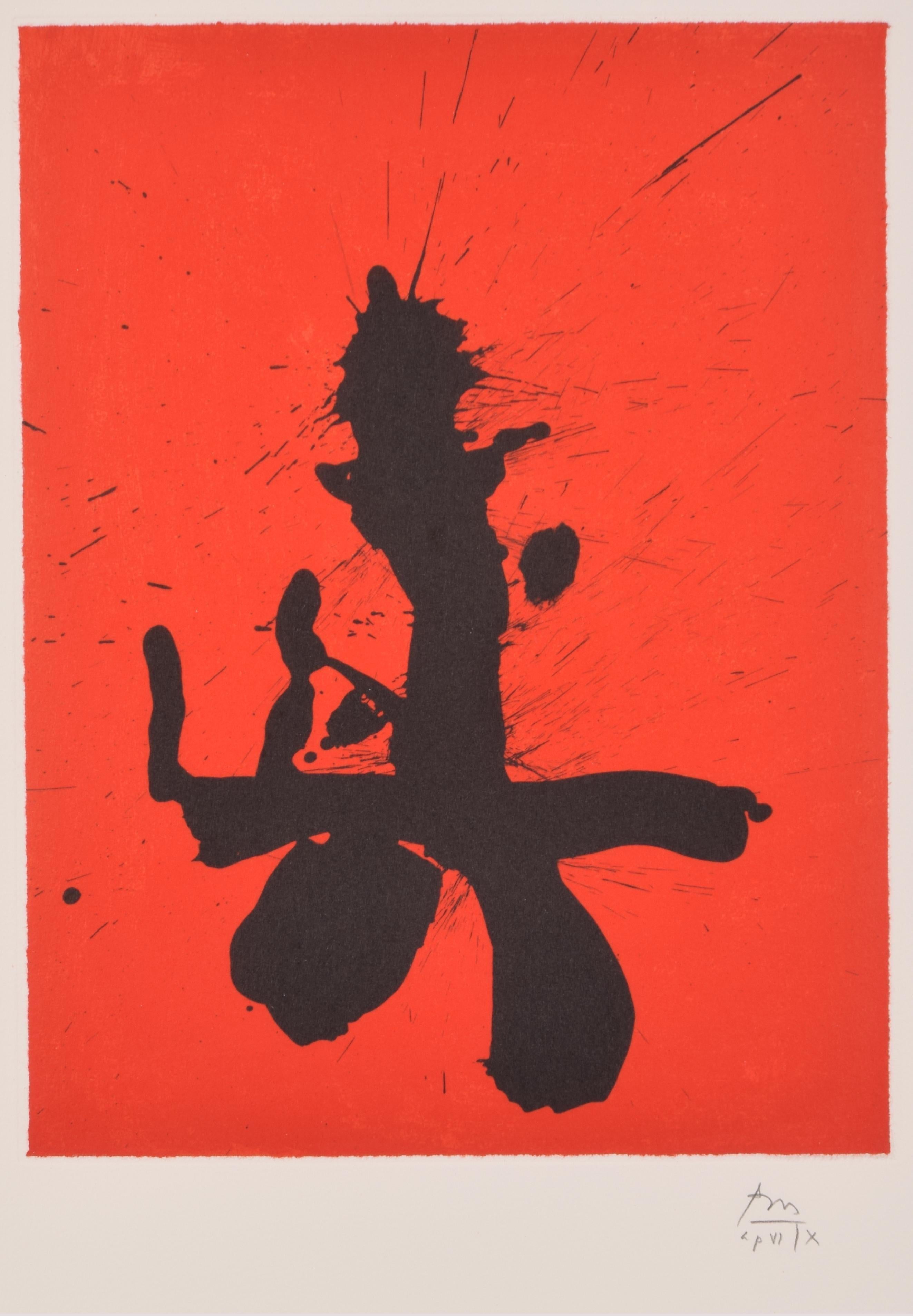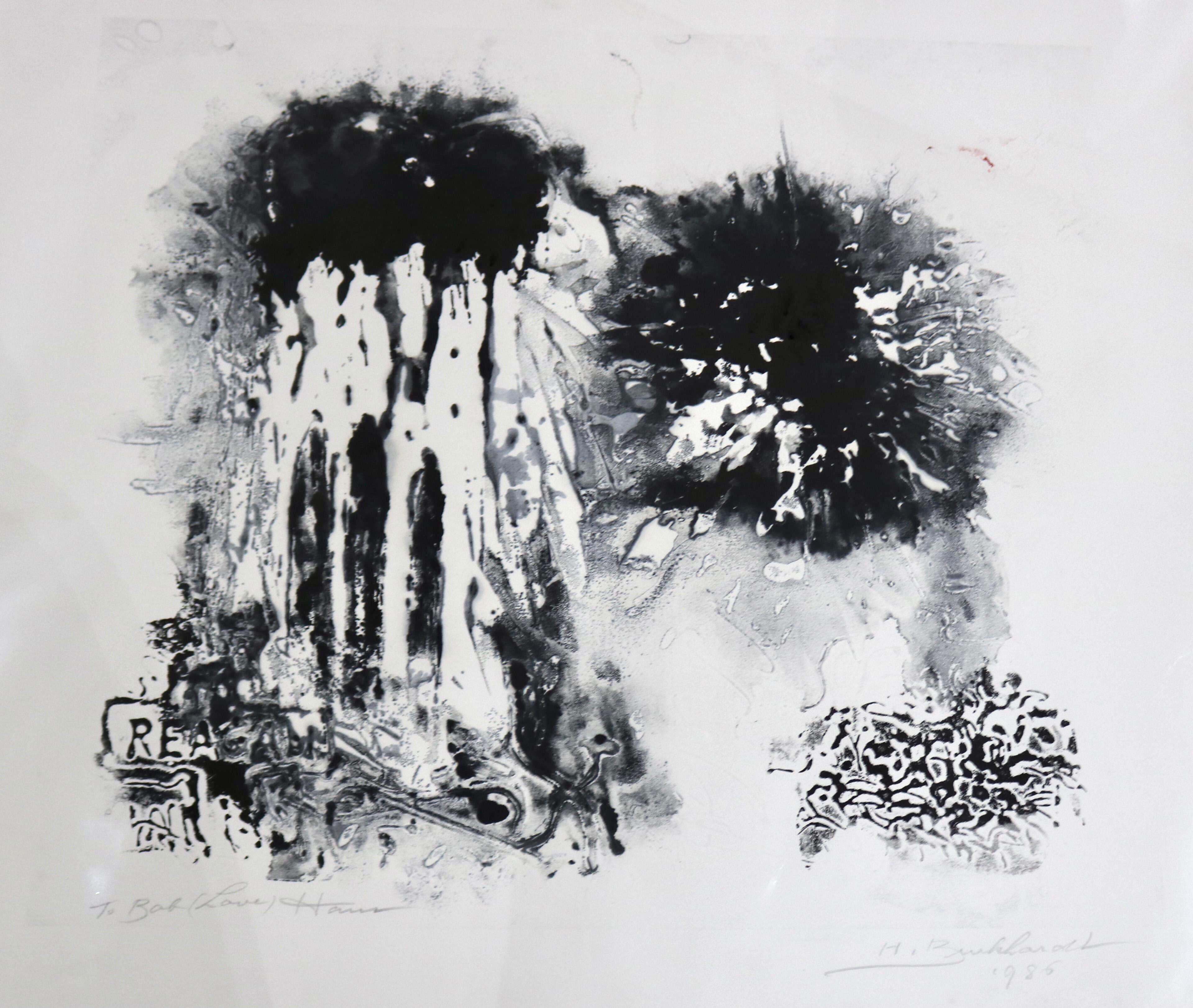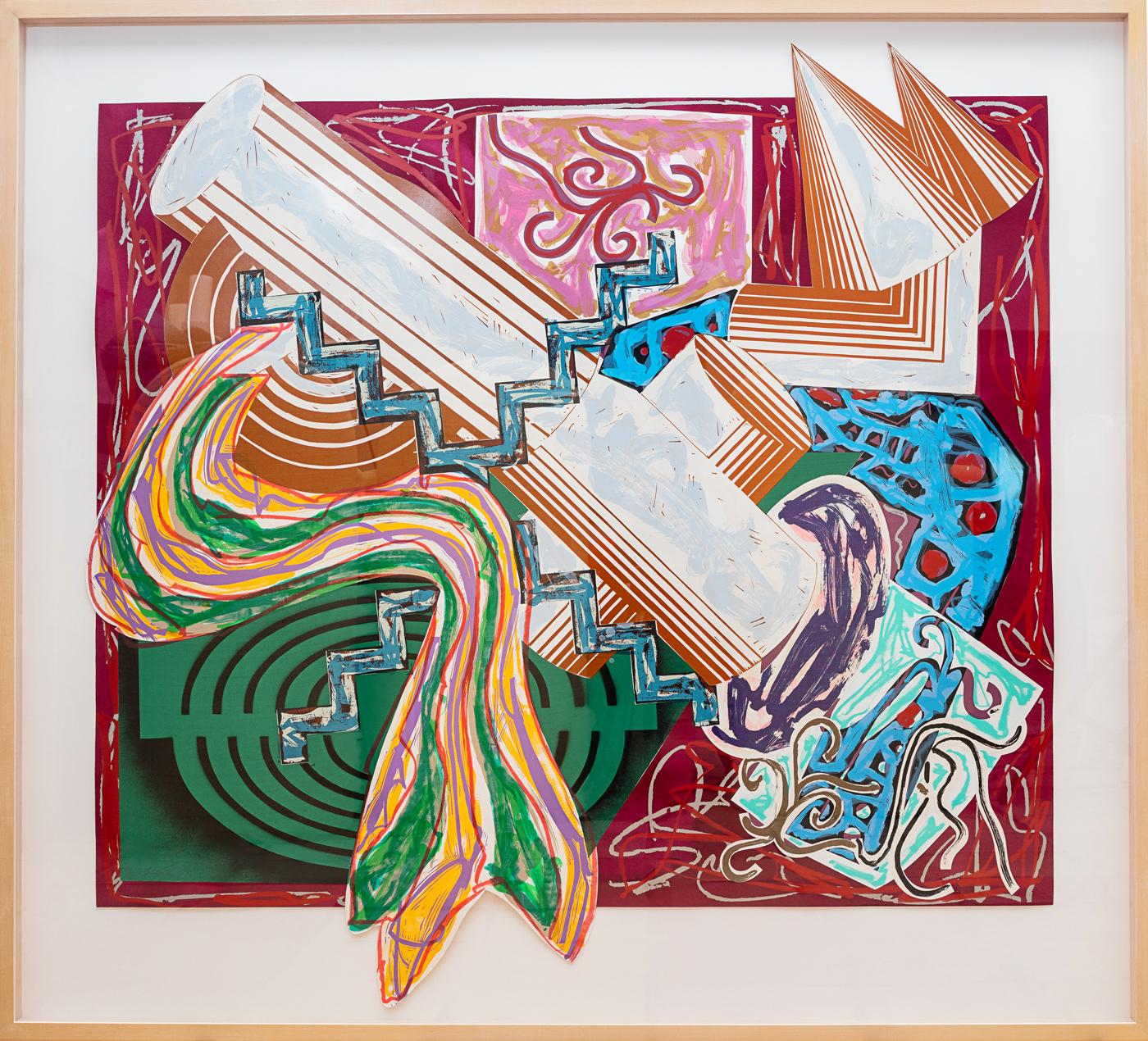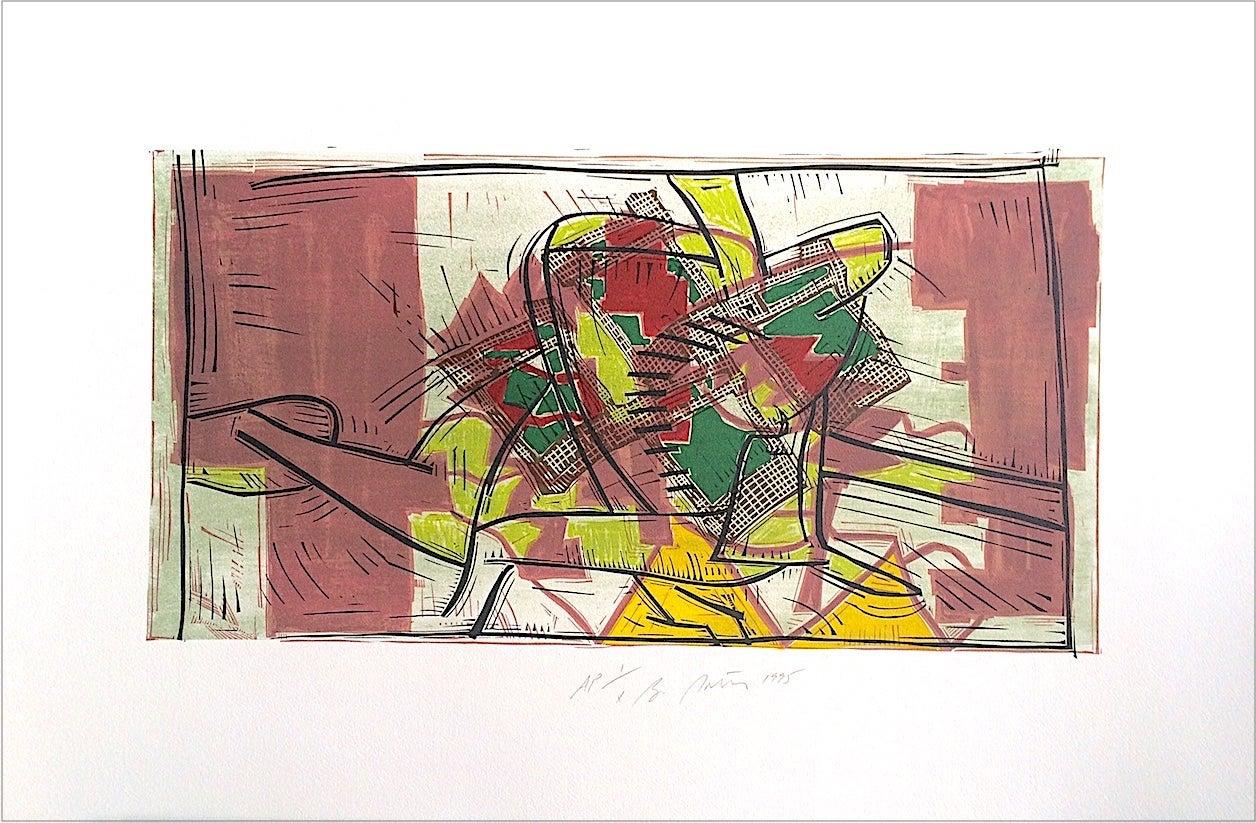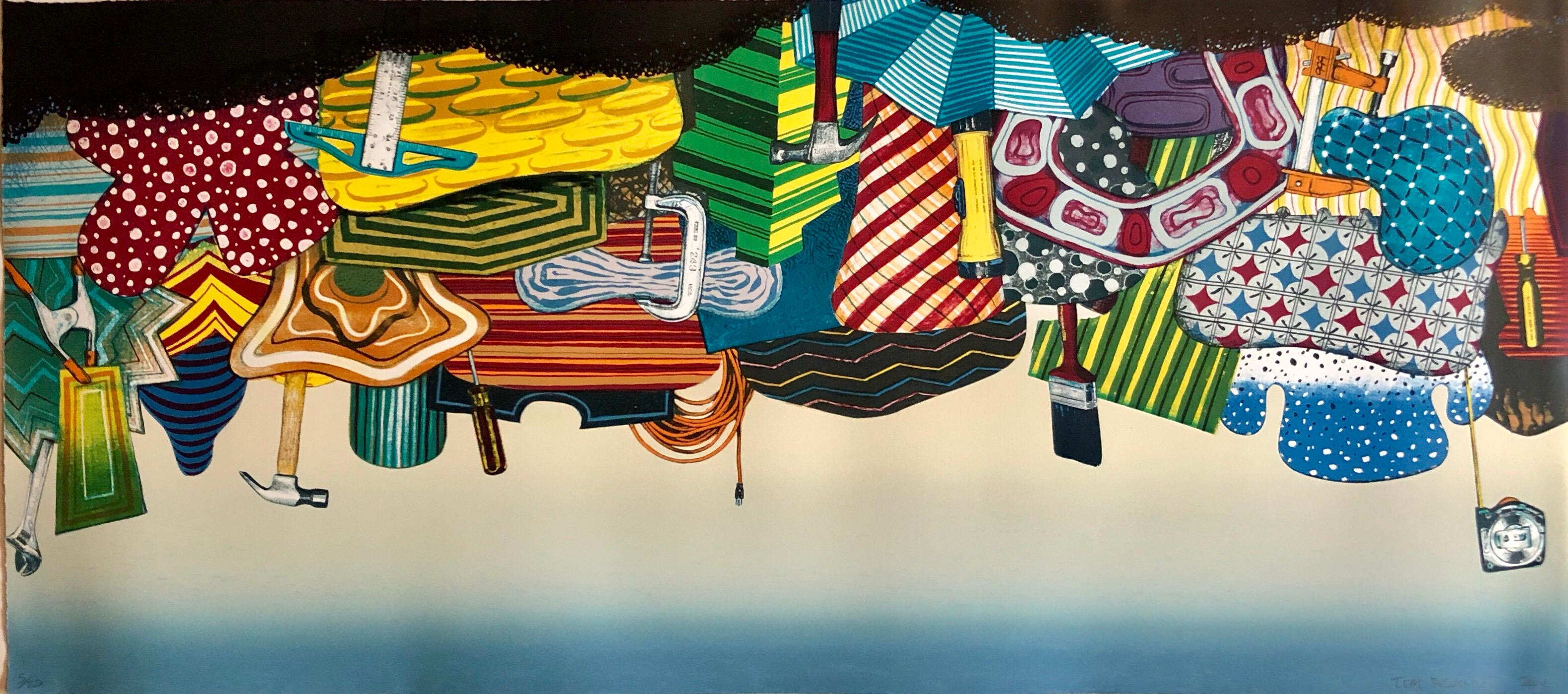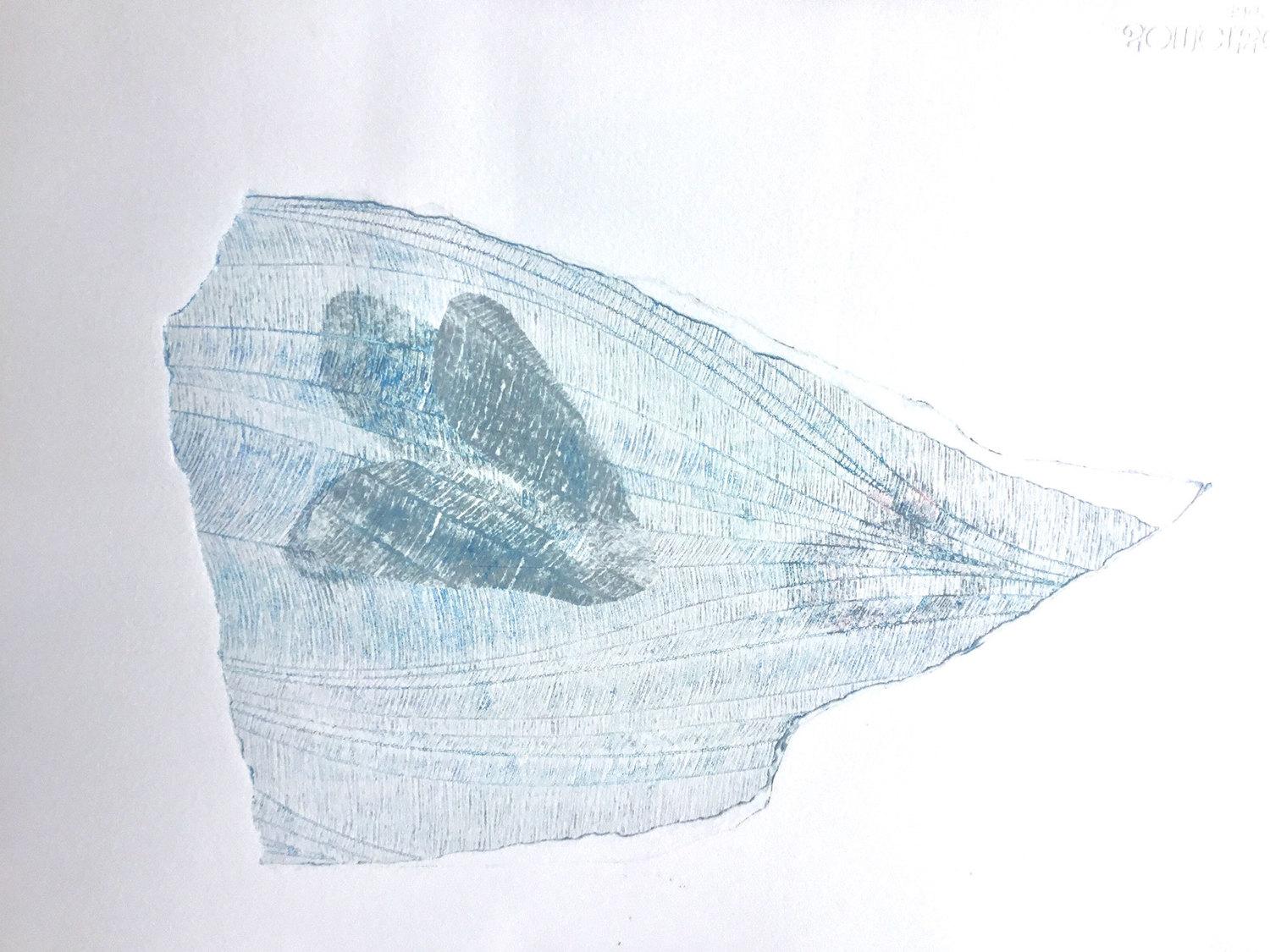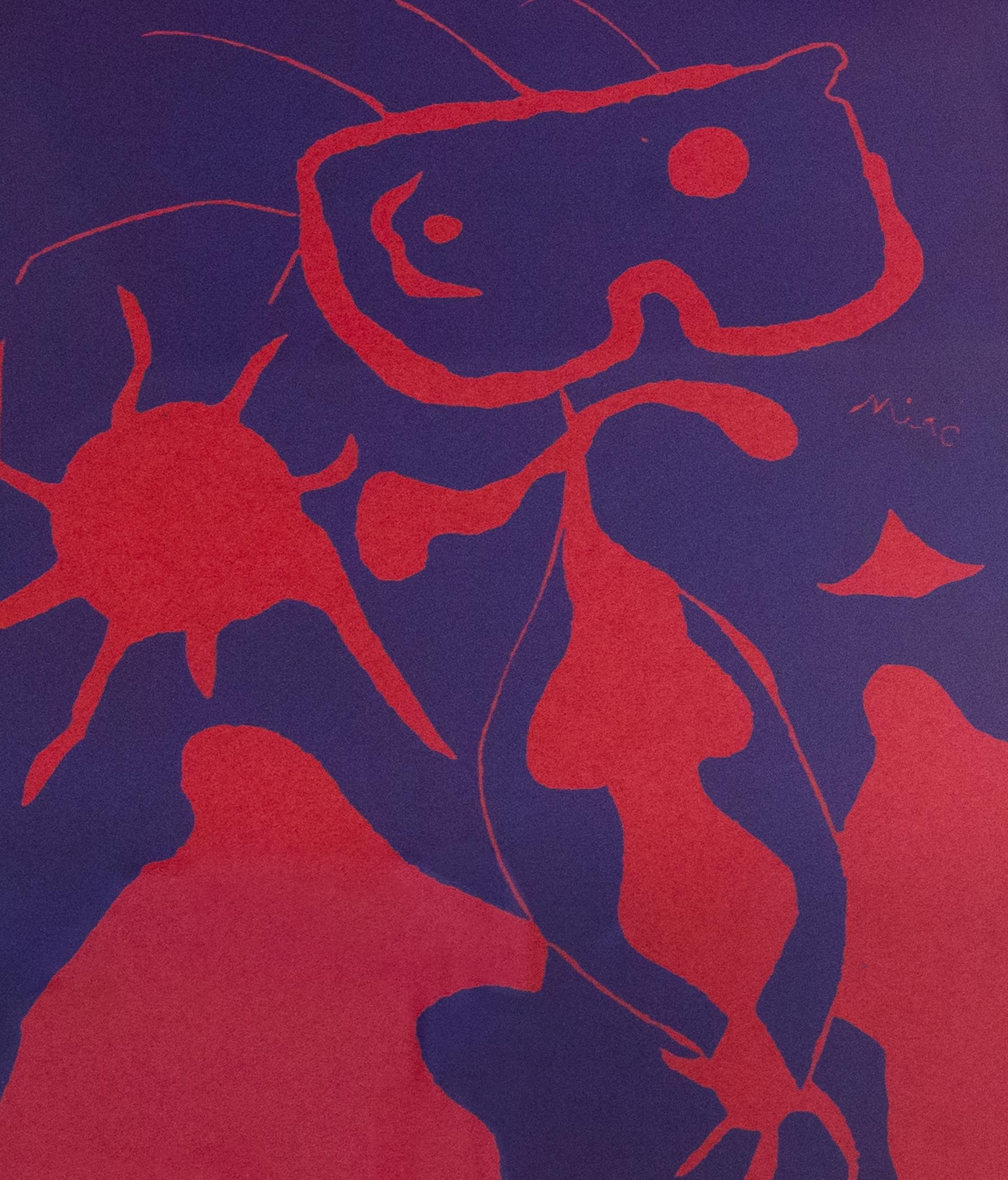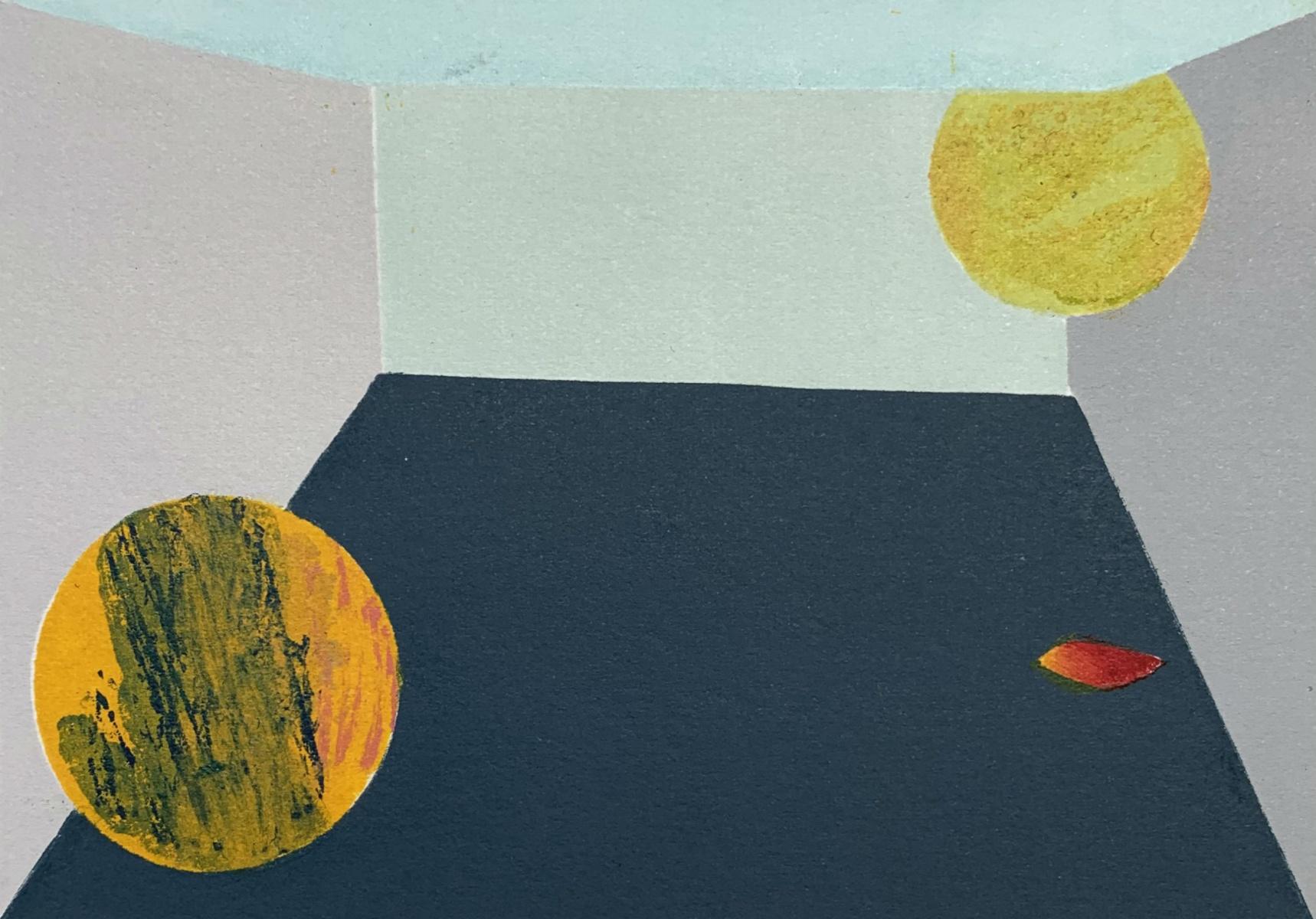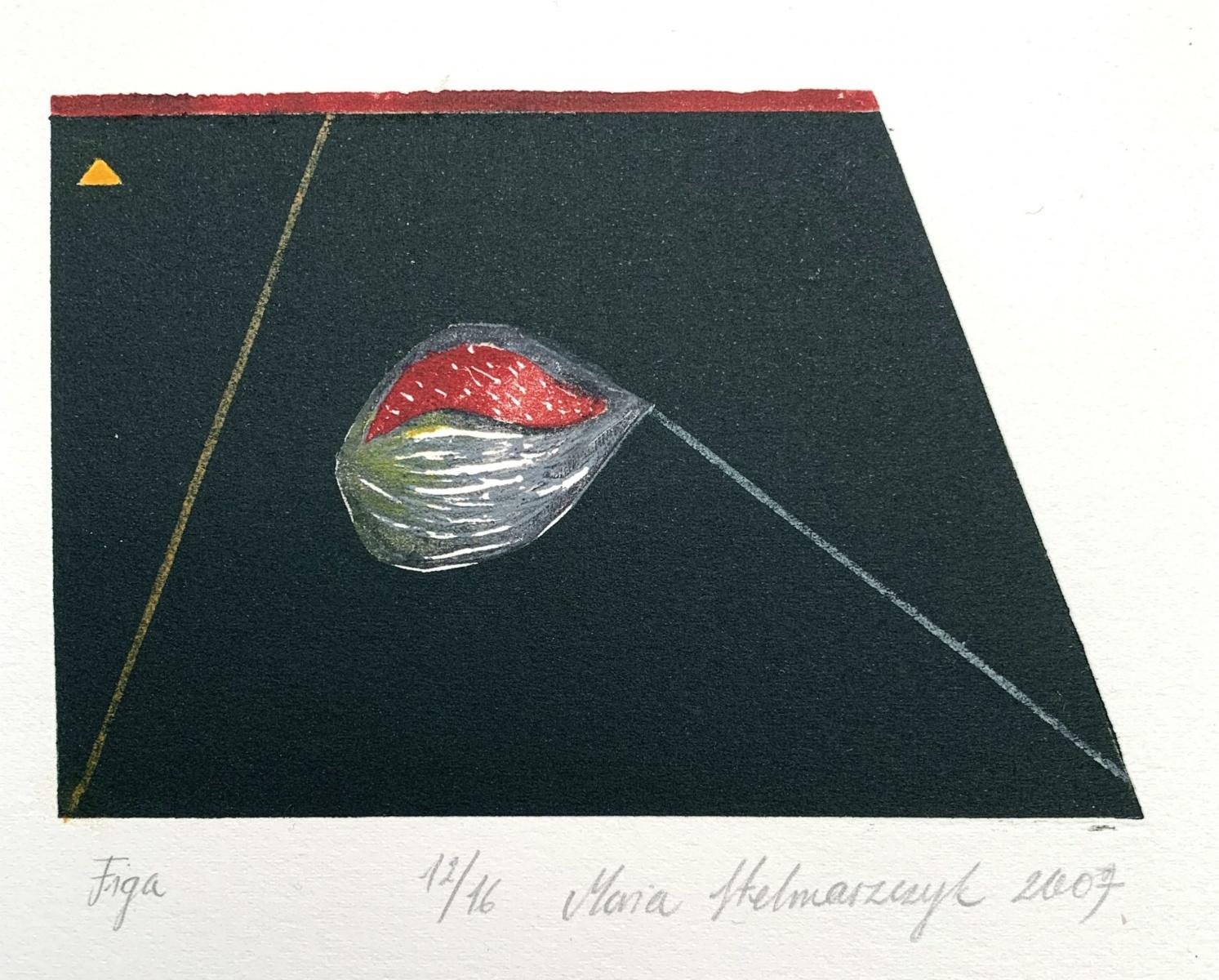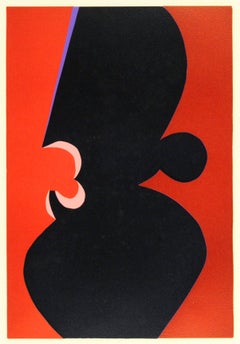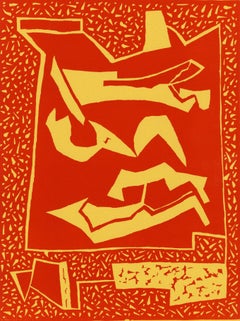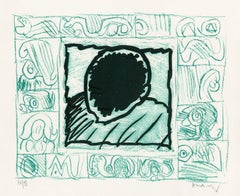
Lino Litho BR, Planche VI
View Similar Items
Want more images or videos?
Request additional images or videos from the seller
1 of 11
Pierre AlechinskyLino Litho BR, Planche VI1970
1970
About the Item
- Creator:Pierre Alechinsky (1927, Belgian)
- Creation Year:1970
- Dimensions:Height: 15 in (38.1 cm)Width: 21.5 in (54.61 cm)
- Medium:
- Period:
- Condition:
- Gallery Location:Fairlawn, OH
- Reference Number:Seller: FA98911stDibs: LU1401552283
About the Seller
5.0
Recognized Seller
These prestigious sellers are industry leaders and represent the highest echelon for item quality and design.
Platinum Seller
These expertly vetted sellers are 1stDibs' most experienced sellers and are rated highest by our customers.
Established in 1978
1stDibs seller since 2013
711 sales on 1stDibs
Typical response time: 1 hour
Associations
International Fine Print Dealers Association
More From This SellerView All
- Icare- IcarusBy André VerdetLocated in Fairlawn, OHIcare- Icarus Linocut in colors, 1972 Unsigned Stamped in ink on verso: "Imprimerie Arnéra" Archives/ Non Signé Provenance: Arnéra Archive Frederick Mulder, Lt...Category
1970s Abstract Abstract Prints
MaterialsLinocut
- Déesse- GoddessBy André VerdetLocated in Fairlawn, OHDéesse- Goddess Linocut in colors, 1972 Unsigned Stamped in ink on verso: "Imprimerie Arnéra" Archives/ Non Signé Watermark: Arches (see photo) An impression printed in black, purpl...Category
1970s Abstract Abstract Prints
MaterialsLinocut
- Untitled (pour XXe Siecle)By Alberto MagnelliLocated in Fairlawn, OHLinocut, printed on yellow wove paper Unsigned as is usual From: XXe Siecle, Volume 13, 1959 Published by G. San Lazzaro for A. Maeght, Paris Printed by...Category
1950s Abstract Geometric Abstract Prints
MaterialsLinocut
- Lino Litho BR, Planche IXBy Pierre AlechinskyLocated in Fairlawn, OHLino Litho BR, Planche IX Linocut and lithograph, 1970 Signed lower right of central image (see photo) Edition: 99 (56/99) (see photo) Published by London Arts Group, Detroit Conditi...Category
1970s Abstract Abstract Prints
MaterialsLinocut
- Lino Litho BR, Planche VIBy Pierre AlechinskyLocated in Fairlawn, OHLino Litho BR, Planche VI Linocut and lithograph, 1970 Signed lower right in pencil (see photo) Edition: 99 (56/99) (see photo) Published by London Arts Group, Detroit Condition: Exc...Category
1970s Abstract Abstract Prints
MaterialsLinocut
- Untitled (Plate 1) DLMBy Alexander CalderLocated in Fairlawn, OHUntitled (Plate 1) DLM Color lithograph, 1963 Unsigned and unnumbered (as usual) From: Derriere le Miroir, No. 141 Published by A. Maeght, Paris Image/sheet size: 14 7/8 x 11 inches...Category
1960s American Modern Abstract Prints
MaterialsLithograph
You May Also Like
- Red Samurai, from Octavio Paz suiteBy Robert MotherwellLocated in Miami, FLTECHNICAL INFORMATION: Red Samurai, from Octavio Paz suite 1987-88 Lithograph and linoleum cut in colors with chine appliqué on handmade Japanese Masa Dos...Category
1980s Abstract Expressionist Abstract Prints
MaterialsHandmade Paper, Lithograph, Linocut
Price Upon Request - California Abstract Expressionist Linocut Lithograph Sepia Print Edition of 6By Hans BurkhardtLocated in Surfside, FLUntitled, 1983, lithograph printed in sepia ink, Hand signed and dated lower right, numbered in pencil with the artist's chop mark lower left, inscribed by artist. From a series of experimental abstract linocuts done in 1983. These are very small editions and were gifted to a friend of the artist. They are done on deckle edged French Arches Art paper. Hans Gustav Burkhardt (1904 – 1994) was a Swiss-American abstract expressionist artist. Hans Burkhardt was born in the industrial quarter of Basel, Switzerland. Captivated by Germanic art, he began dabbling in art in his spare time while learning how to decorate furniture in antique styles. He became foreman of the furniture company's decorating department. From 1925 to 1928 he attended the Cooper Union School of the Arts, where he befriended mentor Arshile Gorky and Willem de Kooning—sharing Gorky's studio from 1928 to 1937. Burkhardt's paintings of the 1930s are part of the genesis of American abstract expressionism. In 1937 he moved to Los Angeles and represented the most significant bridge between New York and Los Angeles. His experimental investigative approach paralleled, and in many instances anticipated, the development of modern and contemporary art in New York and Europe including the work of Mark Rothko, Jackson Pollock, and Barnett Newman. Burkhardt held his first solo exhibition in 1939 at Stendahl Gallery in Los Angeles, arranged by Lorser Feitelson, and, in response to the Spanish Civil War, he painted his first anti-war works. From the late 1930s he began to produce apocalyptic anti-war compositions, a theme which became particularly pronounced in an abstract expressionist style after the atom bomb was dropped on Hiroshima and Nagasaki at the end of the Second World War. In the years following an acclaimed (1945) solo exhibition at the Los Angeles County Museum, Burkhardt continued in his art to respond to WWII, in the aftermath of Gorky's suicide in 1948, Burkhardt delved into his grief and celebration of Gorky's life creating several versions of “Burial of Gorky” and a series entitled “Journey into the Unknown.” Burkhardt first visited Mexico in 1950, and spent the next decade living half of the year in and around Guadalajara. Strongly influenced by Mexican attitudes towards the dead, and by the country's colors, sensuality, and spiritual qualities, Burkhardt “painted the soul of Mexico” with Mexican themes and colors—especially those of burials and ceremonies surrounding death—permeating his abstract work. His Mexican work flirted with Surrealism although he was never really considered a Surrealist artist. Art critics of the time considered him a "great Mexican master” alongside Orozco, Diego Rivera, and Siqueiros, and Rufino Tamayo admired his work. Overall, in the 1950s Burkhardt held 23 solo exhibitions in Los Angeles and Mexico, and participated in group shows at over thirty museums worldwide. He was friends with June Wayne from Tamarind Press. In the 1960s he produced paintings in protest against the Vietnam War, some of which incorporated the human skulls he had collected from Mexican graveyards. As art historian Donald Kuspit stated, Burkhardt was “a master—indeed the inventor—of the abstract memento mori.” In 1964, for the first time in forty years, Burkhardt returned to Basel, and began making annual summer visits where he became a friend of Mark Tobey—printing linocuts for the artist and collecting his work. In the 1970s Burkhardt continued his anti-war paintings—incorporating protruding wooden spikes into the canvas—while simultaneously painting abstractions of merging lovers and cityscapes during his summer visits to Basel. His “Small Print” (protesting smoking), “Graffiti,” and “Northridge” series demonstrate the evolution of his symbolism, and his “Desert Storms” series, in response to Iraq's invasion of Kuwait, was discussed by critic Peter Selz at a presentation at the International Congress of Art Critics Conference. In the last decades of his life, Burkhardt's work had moved from images of imbalance to a study of human tragedy—which he embraced in an attempt to discover beauty and facilitate understanding. Critic Peter Frank called Burkhardt “…one of America’s most vital abstract expressionist painters, someone who took the seed of the movement and cultivated it a rather different way in very different soil.” Burkhardt taught at numerous colleges and universities and retired as a professor emeritus from California State University, Northridge. In 1992 Burkhardt was honored as the recipient of the Lifetime Achievement Award by the American Academy and Institute of Arts and Letters’ Jimmy Ernst (son of Max Ernst) Award. Also in 1992, he established the Hans G. and Thordis W. Burkhardt Foundation. In 1993, the last year of his career, his final series “Black Rain” channeled pain and hardship, but provided poignant, symbolic beacons of hope and wishes for a better future for humanity. His unique role as an important American painter is affirmed by the constant interest and continuing reassessment afforded his work. Select Solo exhibitions 1939: Stendahl Gallery, Los Angeles, March 27 – April 17 1945: Hans Burkhardt, Los Angeles County Museum of Art 1951: Museo de Bellas Artes, Guadalajara, Mexico: Exhibición de Pinturas Modernas; Comara Gallery, Los Angeles 1953: Fisher Gallery, University of Southern California, Los Angeles 1957: Pasadena Art Museum, California: Ten Year Retrospective, June 14 – July 14; 1968: San Diego Museum of Art: Vietnam Paintings...Category
1980s Abstract Expressionist Abstract Prints
MaterialsLithograph, Linocut
- California Abstract Expressionist Linocut Lithograph Ronald Reagan Political ArtBy Hans BurkhardtLocated in Surfside, FLUntitled, 1983, lithograph printed in sepia ink, Hand signed and dated lower right, with the artist's chop mark lower left, inscribed by artist. From a series of experimental abstract linocuts done in 1983. These are very small editions and were gifted to a friend of the artist. They are done on deckle edged French Arches Art paper. This one does not appear to be editioned and might be unique a monoprint or monotype. Hans Gustav Burkhardt (1904 – 1994) was a Swiss-American abstract expressionist artist. Hans Burkhardt was born in the industrial quarter of Basel, Switzerland. Captivated by Germanic art, he began dabbling in art in his spare time while learning how to decorate furniture in antique styles. He became foreman of the furniture company's decorating department. From 1925 to 1928 he attended the Cooper Union School of the Arts, where he befriended mentor Arshile Gorky and Willem de Kooning—sharing Gorky's studio from 1928 to 1937. Burkhardt's paintings of the 1930s are part of the genesis of American abstract expressionism. In 1937 he moved to Los Angeles and represented the most significant bridge between New York and Los Angeles. His experimental investigative approach paralleled, and in many instances anticipated, the development of modern and contemporary art in New York and Europe including the work of Mark Rothko, Jackson Pollock, and Barnett Newman. Burkhardt held his first solo exhibition in 1939 at Stendahl Gallery in Los Angeles, arranged by Lorser Feitelson, and, in response to the Spanish Civil War, he painted his first anti-war works. From the late 1930s he began to produce apocalyptic anti-war compositions, a theme which became particularly pronounced in an abstract expressionist style after the atom bomb was dropped on Hiroshima and Nagasaki at the end of the Second World War. In the years following an acclaimed (1945) solo exhibition at the Los Angeles County Museum, Burkhardt continued in his art to respond to WWII, in the aftermath of Gorky's suicide in 1948, Burkhardt delved into his grief and celebration of Gorky's life creating several versions of “Burial of Gorky” and a series entitled “Journey into the Unknown.” Burkhardt first visited Mexico in 1950, and spent the next decade living half of the year in and around Guadalajara. Strongly influenced by Mexican attitudes towards the dead, and by the country's colors, sensuality, and spiritual qualities, Burkhardt “painted the soul of Mexico” with Mexican themes and colors—especially those of burials and ceremonies surrounding death—permeating his abstract work. His Mexican work flirted with Surrealism although he was never really considered a Surrealist artist. Art critics of the time considered him a "great Mexican master” alongside Orozco, Diego Rivera, and Siqueiros, and Rufino Tamayo admired his work. Overall, in the 1950s Burkhardt held 23 solo exhibitions in Los Angeles and Mexico, and participated in group shows at over thirty museums worldwide. He was friends with June Wayne from Tamarind Press. In the 1960s he produced paintings in protest against the Vietnam War, some of which incorporated the human skulls he had collected from Mexican graveyards. As art historian Donald Kuspit stated, Burkhardt was “a master—indeed the inventor—of the abstract memento mori.” In 1964, for the first time in forty years, Burkhardt returned to Basel, and began making annual summer visits where he became a friend of Mark Tobey—printing linocuts for the artist and collecting his work. In the 1970s Burkhardt continued his anti-war paintings—incorporating protruding wooden spikes into the canvas—while simultaneously painting abstractions of merging lovers and cityscapes during his summer visits to Basel. His “Small Print” (protesting smoking), “Graffiti,” and “Northridge” series demonstrate the evolution of his symbolism, and his “Desert Storms” series, in response to Iraq's invasion of Kuwait, was discussed by critic Peter Selz at a presentation at the International Congress of Art Critics Conference. In the last decades of his life, Burkhardt's work had moved from images of imbalance to a study of human tragedy—which he embraced in an attempt to discover beauty and facilitate understanding. Critic Peter Frank called Burkhardt “…one of America’s most vital abstract expressionist painters, someone who took the seed of the movement and cultivated it a rather different way in very different soil.” Burkhardt taught at numerous colleges and universities and retired as a professor emeritus from California State University, Northridge. In 1992 Burkhardt was honored as the recipient of the Lifetime Achievement Award by the American Academy and Institute of Arts and Letters’ Jimmy Ernst (son of Max Ernst) Award. Also in 1992, he established the Hans G. and Thordis W. Burkhardt Foundation. In 1993, the last year of his career, his final series “Black Rain” channeled pain and hardship, but provided poignant, symbolic beacons of hope and wishes for a better future for humanity. His unique role as an important American painter is affirmed by the constant interest and continuing reassessment afforded his work. Select Solo exhibitions 1939: Stendahl Gallery, Los Angeles, March 27 – April 17 1945: Hans Burkhardt, Los Angeles County Museum of Art 1951: Museo de Bellas Artes, Guadalajara, Mexico: Exhibición de Pinturas Modernas; Comara Gallery, Los Angeles 1953: Fisher Gallery, University of Southern California, Los Angeles 1957: Pasadena Art Museum, California: Ten Year Retrospective, June 14 – July 14; 1968: San Diego Museum of Art: Vietnam Paintings...Category
1980s Abstract Expressionist Abstract Prints
MaterialsLithograph, Linocut
- Then Came a Stick and Beat the Dog, Illustrations After El Lissitzky's Had GadyaBy Frank StellaLocated in Rancho Santa Fe, CALithograph, linocut, and screenprint in colors with hand-coloring and collage, on wove paper, 1984, signed and dated in pencil, from the numbered edition of 60 (there were also 10 ar...Category
1980s Abstract Abstract Prints
MaterialsPaper, Mixed Media, Lithograph, Linocut, Screen
- Color Lithograph Linocut Chine Collé "Workshop" Bright Modernist Pop ArtBy Tom BurckhardtLocated in Surfside, FLHand signed and numbered edition of 25. 16 x 36" sheet size without frame. “Workshop” is an ambitious color lithograph and linocut with chine collé printed in twelve colors from nine plates and one linocut. It has been printed in an edition of 25, plus proofs, on white Rives BFK paper 16 x 36” with chine collé of various papers. (No, it’s not upside down) Born 1964 in New York where he still currently resides and works alongside his partner the ceramist Kathy Butterly. Son of the photographer Rudy Burckhardt and painter Yvonne Jacquette, Tom Burckhardt was 1986, BFA, State University of New York, Purchase, NY 1992–1993, Skowhegan School of Painting and Sculpture, ME 1996, Marie Walsh Sharpe Art Foundation Studio Grant 1997, New York Foundation for the Arts, Painting Grant 1997 Pollock-Krasner Foundation Grant 2002 George Hitchcock Award, National Academy of Arts 2003, Richard & Hinda Rosenthal Foundation Award, American Academy 2005, AICA Best Show of an Emerging or Underknown Artist 2005 Pollock-Krasner Foundation Grant 2006 Best Installation, Best of Houston, the Houston Press 2009 Guggenheim Foundation Grant 2010, New York Foundation for the Arts Drawing/Print Grant 2010 Joan Mitchell Foundation Grant Tom Burckhardt’s work is a carnival of images jumbled and jostling each other in precarious nonsensical compositions. He uses lushly colored and patterned images from all kinds of sources that bounce between abstraction and representation. Images come from tool catalogs, paper and fabric patterns, funhouse painting, architectural details, stripes, dots and squiggles. It is as if Burckhardt is a cartoonist merrily channeling Ellsworth Kelly, Paul Feeley, Robert Therrien, and Myron Stout, among others. Like Red Grooms, for whom he worked as an assistant, Burckhardt ransacks his influences yet ends up with something unmistakably his own. His work bears the influence of is a synthesis of many things: the tribal-influenced abstract painting of Steve Wheeler...Category
Early 2000s Pop Art Interior Prints
MaterialsLinocut, Lithograph
- Composition 3: Rose Beige, Yellow, Lime, Signed Color Linocut Modernist AbstractBy Bruce PorterLocated in Union City, NJComposition 3: Rose Beige, Yellow, Lime is an original hand drawn color linocut/litho by the New York artist Bruce Porter, printed from hand carved linoleum blocks and hand drawn lit...Category
1990s Abstract Abstract Prints
MaterialsLithograph, Linocut
